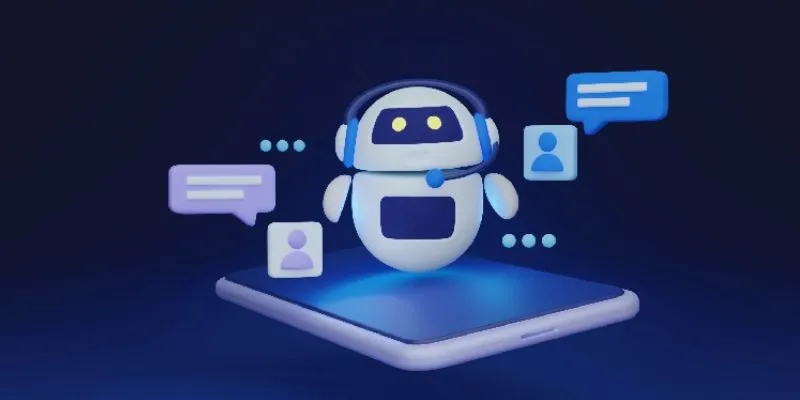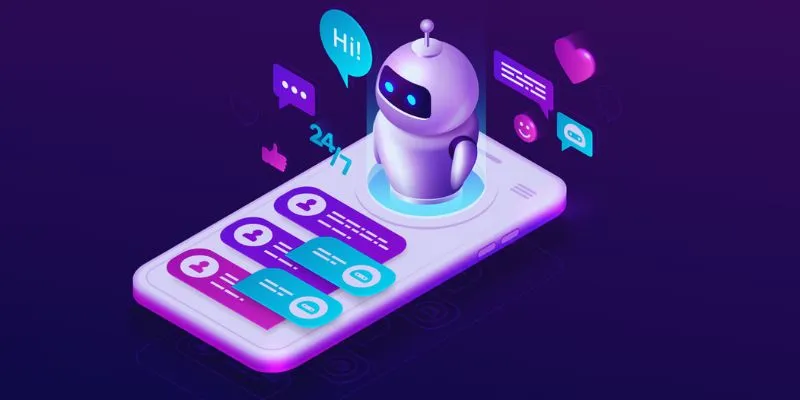Thanks to conversational artificial intelligence, corporate interactions with consumers are evolving rapidly. Companies are increasingly leveraging AI chatbots to enhance customer satisfaction, reduce response times, and streamline services. Learning how to create intelligent AI chatbots can give companies a competitive edge. Effective bots can boost user engagement, increase sales, and improve customer support.
By automating repetitive tasks, AI chatbots save both time and money. Success in this field depends on smart design, accurate training data, and continuous updates. Conversational AI is more than just a trend; it’s a valuable tool for long-term success. This guide will teach you how to design chatbots that accurately meet user needs and enhance business processes.

Understanding the Business Value of Conversational AI
Conversational AI offers significant advantages across various business domains. AI chatbots enable sales teams to respond swiftly and close leads faster. With 24/7 chatbot support, customer service becomes more efficient, reducing support costs by handling routine inquiries. Automating repetitive tasks helps companies save money, while AI bots decrease wait times, thereby increasing customer satisfaction. Human staff can then focus on more complex issues.
AI bots collect valuable data from customer interactions, improving future engagements and decision-making. A well-designed chatbot enhances website and app interactions, boosting conversions and guiding customers more effectively. Voice assistants also leverage conversational AI to provide hands-free service, underscoring AI’s role in digital transformation. These tools facilitate highly scalable, personalized, and seamless customer interactions.
Designing a User-Focused Bot Strategy
Successful bots are built with user needs in mind. Before embarking on a project, businesses should understand their audience. Identify user problems and service gaps, and map the typical user journey on your platform. Determine where the bot will be most beneficial, and choose the appropriate tone and language for your audience. Create a natural and engaging dialogue, avoiding robotic responses. Implement fallback messages for misunderstandings and always provide a way to reach a human agent.
Avoid overwhelming users with lengthy or complex messages. Keep responses concise, practical, and relevant. Develop simple dialogues that naturally guide users. Design for multiple platforms, including websites, apps, and messaging tools. Regularly update scripts based on user behavior. Consider the bot as an extension of your brand. A user-centered approach maintains interest, increases satisfaction, and builds trust.
Training Your Bot with Quality Data
The foundation of an effective AI chatbot is quality training data. Poor data leads to weak responses and frustrated users. Build your dataset from real interactions, incorporating common questions, colloquial language, and idioms. Organize data into themes and intents, providing multiple examples for each. Use natural language processing technologies to refine and categorize data. Carefully label every example for maximum accuracy. Regularly test your bot to identify errors or confusion.
Review chat logs and user interactions to improve training data quality over time. Train the bot in various environments and user states. Account for spelling errors and quick responses. Ensure the bot’s answers are empathetic and clear, including polite prompts and confirmations as needed. Good training ensures the bot accurately understands users, resulting in better performance and increased satisfaction.

Integrating the Bot with Business Systems
Smart bots excel when integrated with key business systems. Connect the bot to customer service software for quick support. Use CRM tools to access customer data and integrate it. Bots can automate message sending and record updates. Sync with your product database for accurate responses. Use APIs to interact with tracking systems and payment tools, allowing for automatic order updates, billing, or scheduling. Secure these integrations with proper encryption and authentication. Integration speeds up service and personalizes responses.
Consistent data across platforms benefits staff as well. Ensure the bot supports multichannel activities, seamlessly switching between chat, email, and voice. Plan integration with data teams and IT, testing each function before launch. Monitor performance with analytics and make adjustments as needed. Deep integration enhances user experience and turns your bot into a valuable business asset.
Ensuring Data Privacy and Ethical Bot Behavior
To build user trust, AI chatbots must adhere to strict data privacy policies. Bots often collect sensitive personal data, which businesses must protect with robust security and encryption layers. Always inform users if data is being collected or stored, and provide simple opt-out options and clear privacy policies. Develop bots that comply with GDPR or CCPA regulations. Avoid long- term storage of chat logs or unnecessary user data.
Train your bot not to request personal information unless necessary. In sensitive situations, the bot should never make decisions without human approval. Monitor bot behavior to ensure accuracy and fairness. Immediately correct biased responses or harmful content. Establish explicit ethical guidelines for your AI systems. Incorporate diverse training data to avoid biased conclusions. Regularly test the bot’s responses for ethical alignment. Responsible AI fosters user trust, protects rights, and enhances corporate reputation over time.
Testing, Monitoring, and Improving Bot Performance
No bot is perfect from the start. Rigorous testing is crucial before launch. Run models to verify flow and logic, and test across various browsers and devices to correct response errors. Encourage team members to test the bot and provide feedback. Monitor performance post-launch, tracking response times, resolution rates, and user satisfaction. Identify frequent mistakes or unclear queries.
Analyze user feedback to address confusing aspects. Regularly update the bot with new questions and data, adding features based on user needs or issues. Test thoroughly after each major change. Use A/B testing to evaluate new ideas. Ensure continuous improvement over time. Recognize patterns and adjust your bot accordingly. Proactive management keeps your bot relevant and effective, fostering loyal customers and improved services.
Conclusion
For modern businesses, robust AI chatbots deliver tangible results. By employing a strategic approach and utilizing quality data, companies can develop reliable AI bots for customer support. Success requires continuous updates, smart design, and effective training. Businesses must align their bots with real user needs and integrate them across multiple platforms. By leveraging conversational AI, businesses can enhance services, reduce costs, and boost efficiency. Maintaining, updating, and improving the bot ensures long-term benefits. These guidelines will help you create effective AI chatbots that align with your goals and enhance user experiences.
 zfn9
zfn9





















